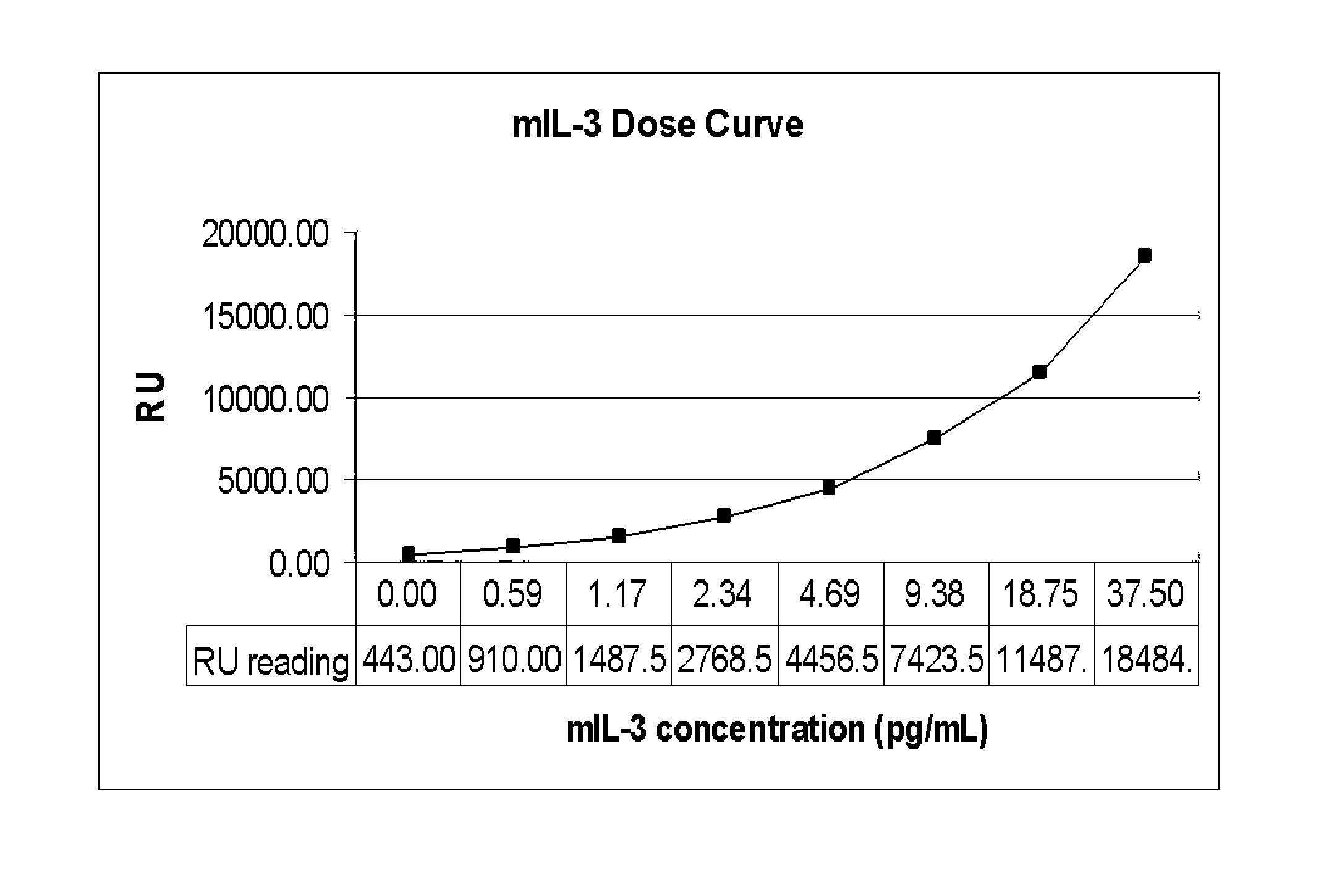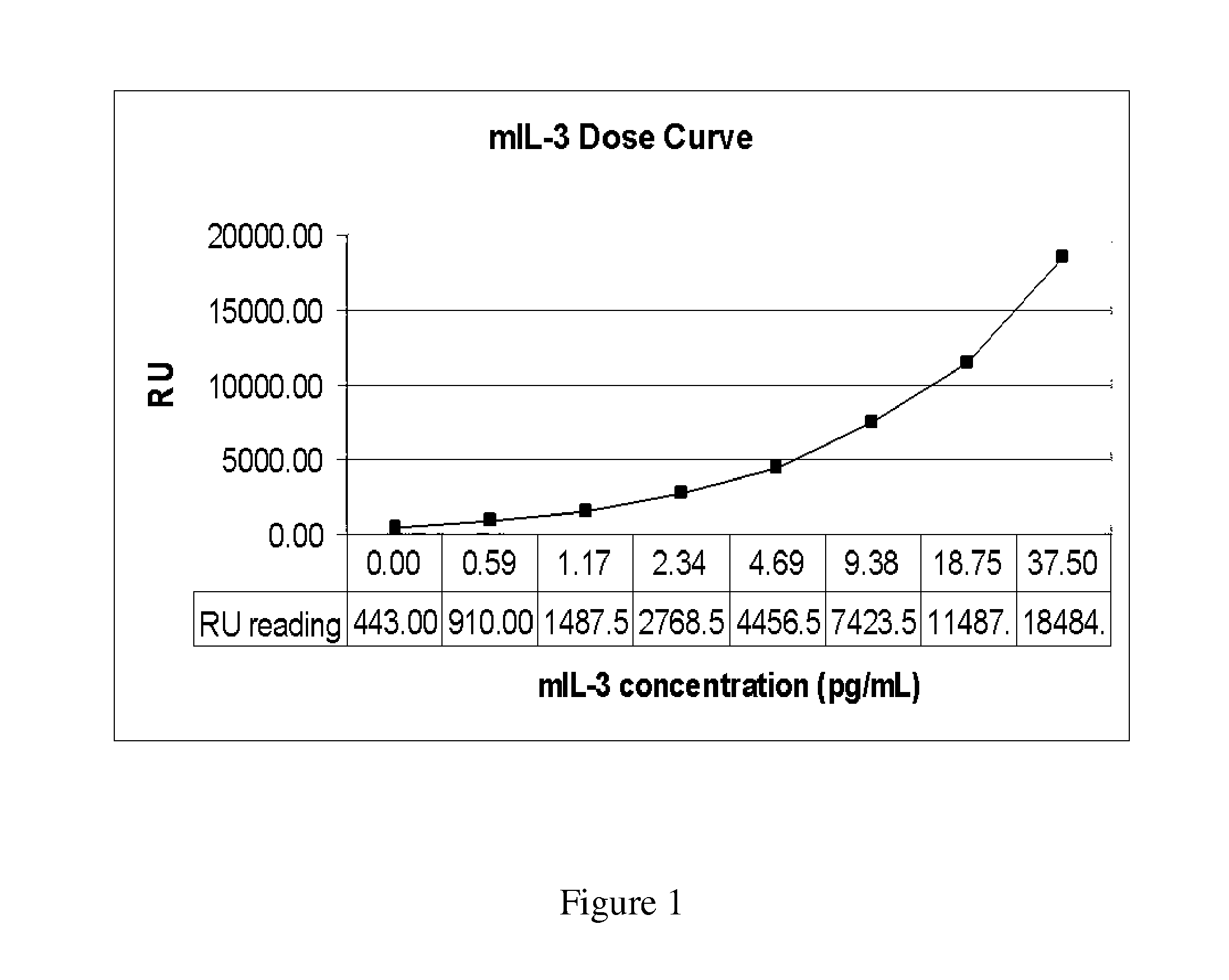Cell systems and methods for detecting proliferation acitvity
a cell system and proliferation factor technology, applied in the field of cell systems and cell systems for clinical assessment of proliferation factor activity, can solve the problems of undesirable clinical diagnostic use of radioactivity, loss of efficacy and risk of adverse side effects, and the immune system's ability to reduce or neutralize the effective concentration of administered biopharmaceuticals
- Summary
- Abstract
- Description
- Claims
- Application Information
AI Technical Summary
Problems solved by technology
Method used
Image
Examples
example i
Cell Proliferation Determination by Luciferase Expression
[0092]This Example shows that cell proliferation and / or cell viability can be assessed by luciferase activities constitutively expressed in stably transfected cells.
[0093]The cell line 32Dcl23 is a stably transfected 32D cell line that expresses human mpl gene encoding the receptor for Thrombopoietin (TPO). These 32D clone 23 cells are dependent on recombinant murine interleukin-3 (IL-3) for routine culturing and growth and respond to both TPO and mIL-3 with cell proliferation. Responses to cytokine induced proliferation was determined by light emission from constitutively expressed luciferase and compared to tritiated thymidine and ATP content proliferation assays.
[0094]The TPO receptor-expressing stable cell line constitutively expressing Renilla luciferase, termed 32Dcl23pRL-F11, was generated by cotransfection of pRL-CMV (Promega, Madison, Wis.) and pBK-CMV (Stratagene, San Diego, Calif.) plasmids into 32Dcl23 cells. pRL-C...
PUM
| Property | Measurement | Unit |
|---|---|---|
| time | aaaaa | aaaaa |
| time | aaaaa | aaaaa |
| concentration | aaaaa | aaaaa |
Abstract
Description
Claims
Application Information
 Login to View More
Login to View More - R&D
- Intellectual Property
- Life Sciences
- Materials
- Tech Scout
- Unparalleled Data Quality
- Higher Quality Content
- 60% Fewer Hallucinations
Browse by: Latest US Patents, China's latest patents, Technical Efficacy Thesaurus, Application Domain, Technology Topic, Popular Technical Reports.
© 2025 PatSnap. All rights reserved.Legal|Privacy policy|Modern Slavery Act Transparency Statement|Sitemap|About US| Contact US: help@patsnap.com



